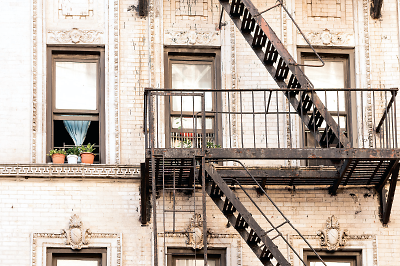Home Visit Mental Health Services Opens a New Dialogue in NYC
Abstract
A home-based treatment program being offered in New York may help to reduce hospitalization, rehospitalizations, and ER use in patients with serious mental illness.
Parachute NYC takes the plunge into Manhattan, Queens, and the Bronx to meet and treat people with serious mental illness where they live, right in their homes.

The program is run by the Visiting Nurse Service of New York (VNSNY) and is based on the Needs-Adapted Treatment Model or Open Dialogue approach, developed in Finland in the 1990s, David Lindy, M.D., the clinical director and chief psychiatrist for VNSNY’s Community Mental Health Services, told Psychiatric News. Lindy is also an associate clinical professor of psychiatry at Columbia University College of Physicians and Surgeons.
The original Finnish Open Dialogue model was based on bringing clinical staff members together with the patient and a family member in “network meetings.” There, the patient participates by observing and responding to clinical discussions about diagnosis or treatment among staff members that ordinarily go on outside the patient’s presence.
About 78 percent of Parachute NYC patients were diagnosed with schizophrenia or affective psychoses. They were at least 16 years old and willing to seek or accept treatment voluntarily.
The professional team is coordinated by a social worker and includes a nurse, a family therapist, several other social workers, two or three peer specialists, and a psychiatrist. Usually two team members make the visit to meet with the patient and family. Network meetings are held as often as needed.
“We adapted that model to permit inclusion of some other non-paid person in the patient’s life instead of a family member,” said Lindy in an interview. “We work with people with psychotic illness in a completely non-hierarchical, non-coercive manner. Our goal is to continue a dialogue so that problems and solutions can emerge organically.”
While the psychiatrist doesn’t necessarily make house calls with the team, he or she is available to provide expertise and prescribe medications when the patient is ready to accept them.
“We originally thought that there would be low levels of medication usage, but the rates are actually high,” he said. About 85 percent of patients are treated with psychiatric medications.
Lindy and five colleagues presented preliminary findings of their work with 110 patients from July 2015 to August 2016 in a poster at APA’s fall meeting, IPS: The Mental Health Services Conference in Washington, D.C., in October. Parachute NYC served an average of 34 individuals in 75 visits per month. There were just 1.6 hospital admissions and 1.5 emergency room visits per month on average. Parachute NYC patients had a 4 percent hospitalization rate compared with a 13 percent rate for a similar New York City population.
“[P]reliminary outcomes suggest Parachute can effectively stabilize crises and decrease hospitalization, rehospitalizations, and ER utilization over time for those individuals willing to voluntarily participate,” they said.
While keeping patients out of the hospital can lead to cost savings, Lindy emphasized that Parachute NYC is not a quick fix. It requires much training time and increased staff utilization.
Financing for Open Dialogue programs, including Parachute, has tended to rely on grants from governments or foundations. The first three years of funding since the program began in New York in 2012 were provided by a grant from the New York City Department of Health and Mental Hygiene, followed by two years of support from the New York Office of Mental Health for patients discharged from state hospitals.
Lindy hopes that ways can be found to continue the program without relying on grants.
Insurance typically does not pay for both of the two staff members who go on each Parachute visit, not to mention the costs of travel and clinical time.
Long-term funding remains an issue for such programs, although a shift to capitation payment systems might make the Open Dialogue model more viable, wrote Christopher Gordon, M.D., of Advocates in Framingham, Mass., in a Psychiatric Services in Advance article that described another one-year test of the program.
“[Open Dialogue], which is an alternative model to RAISE [Recovery After an Initial Schizophrenia Episode] and EASA [Early Assessment and Support Alliance], emphasizes deep listening and shared decision making to enhance engagement,” concluded Gordon. “If the promising Finnish outcomes are replicated, the higher early costs would be justified by longer-term savings and improved functional outcomes.” ■



